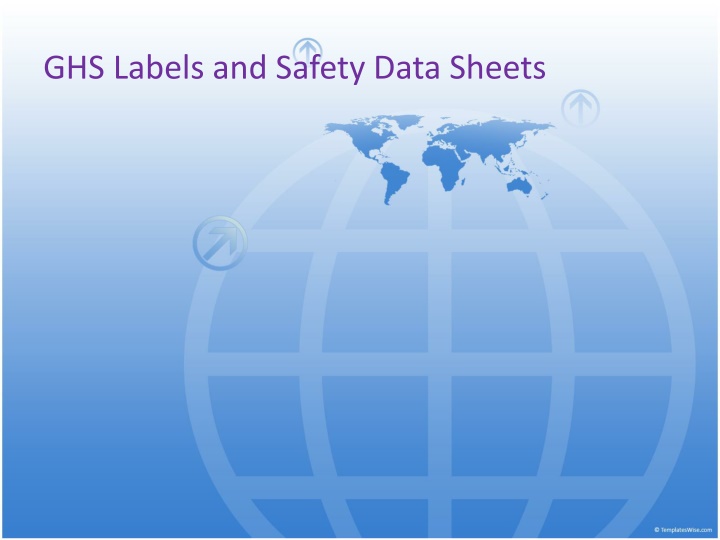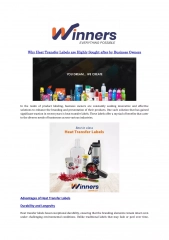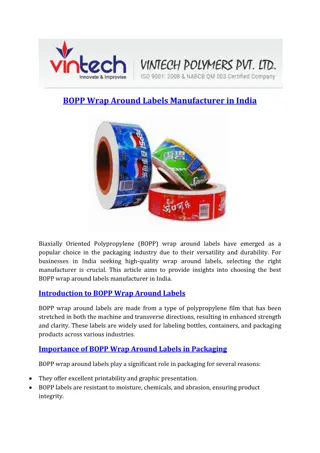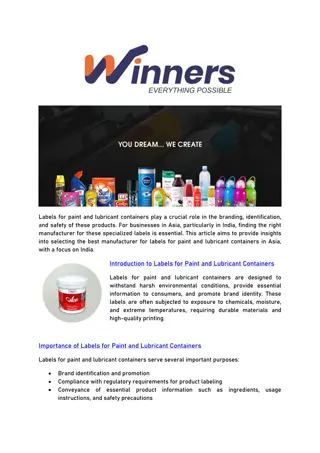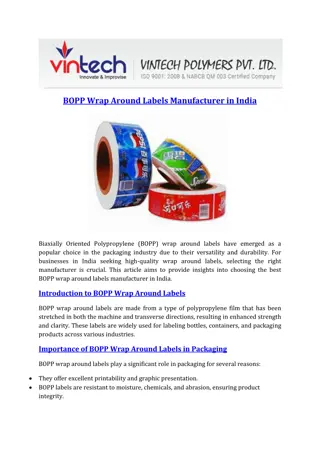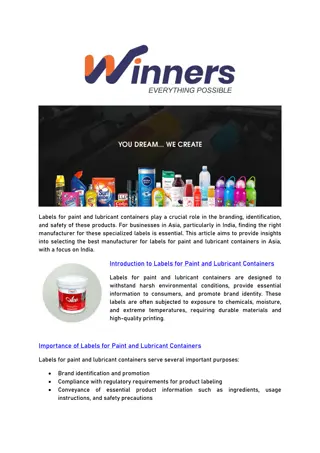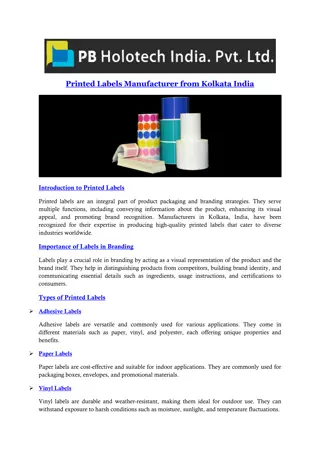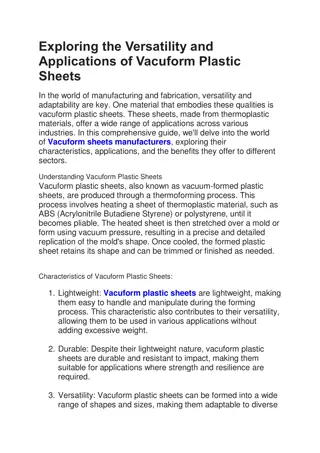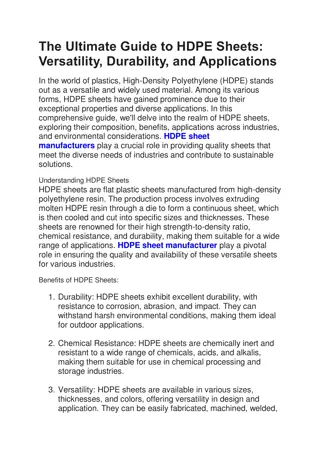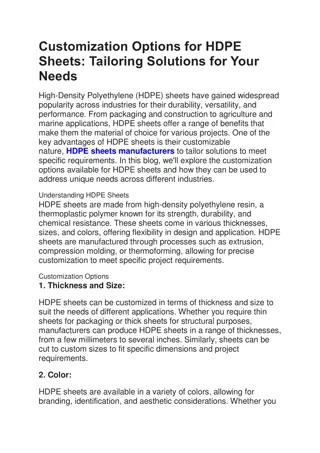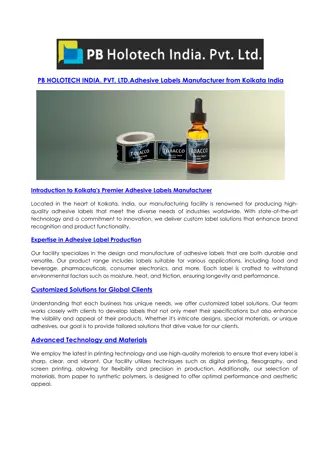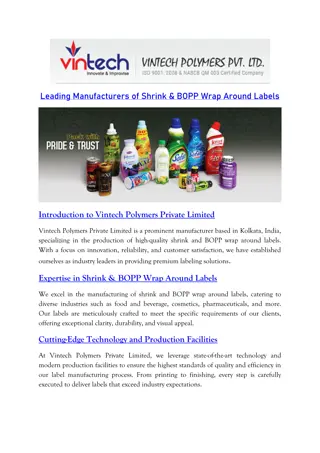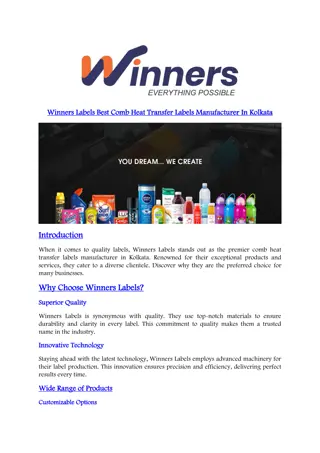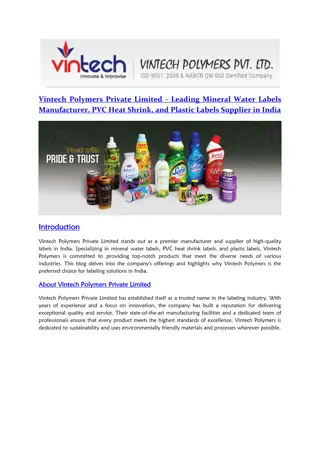Important Information on GHS Labels and Safety Data Sheets
GHS labels contain essential details such as name, hazard statements, precautionary statements, signal words, and pictograms. Understanding these labels is crucial for recognizing potential hazards and taking necessary precautions. This content emphasizes the significance of employer responsibilities in maintaining legible labels on containers and provides insights into workplace labeling requirements, along with explanations of product identifiers, signal words, hazard statements, precautionary statements, pictograms, and supplementary information.
Download Presentation

Please find below an Image/Link to download the presentation.
The content on the website is provided AS IS for your information and personal use only. It may not be sold, licensed, or shared on other websites without obtaining consent from the author.If you encounter any issues during the download, it is possible that the publisher has removed the file from their server.
You are allowed to download the files provided on this website for personal or commercial use, subject to the condition that they are used lawfully. All files are the property of their respective owners.
The content on the website is provided AS IS for your information and personal use only. It may not be sold, licensed, or shared on other websites without obtaining consent from the author.
E N D
Presentation Transcript
GHS Labeling What Labels Will Contain: 1. Name Address and Phone Number 2. Product Identifier 3. Signal Word * 4. Hazard Statement(s) * 5. Precautionary Statement(s) 6. Pictograms * 7. Prominently Displayed
PRODUCT IDENTIFIER Chemical Name, Code Number or Batch Number Manufacturer, Importer or Distributor Decides Same Identifier Must Be Used In Section 1 Of The SDS Name, Address and Phone Number
SIGNAL WORD Indicates Relative Severity Level of The Hazard Alerts The Reader To Potential Hazard(s) Only Two Signal Words: DANGER and WARNING Danger Is More Severe Only One Word Will Be Used
Pictograms Must Be Diamond Shaped Black Hazard Symbol, White Background Red Frame Around Pictogram-must be wide enough to be clearly visible There Are 9 in the GHS
Hazard Statements Describes The Nature of The Hazard(s) Degree of Hazard All Applicable Hazards Must Appear On The Label Statements May Be Combined To Improve Readability Hazard Statement Must Match Classification Category; Danger or Warning
Precautionary Statements Phrase Describes Recommended Measures To: 1. Minimize or Prevent Adverse Effects 2. Prevent Improper Handling Or Storage
Supplementary Information Additional Instructions or Information Other Hazards Not Otherwise Classified Ingredients of Unknown Acute Toxicity > 1%
Employer Responsibilities Maintaining Labels on Containers Must Be Legible New Hazards
Workplace Labels Optional For Workplace Or In-Plant Use Two labeling options List Health And Physical Hazards Must Be In English Pictograms Additional Instructional Symbols NFPA and HMIS
Label Uses Proper Storage Information First Aid Multiple Hazards
SDS Format Will Replace MSDS s Standardized 16 headings
SDS Headings June 1, 2015 1. Identification 2. Hazard(s) Identification 3.Composition/Information On Ingredients 4. First-Aid Measures 5. Fire-Fighting Measures 6. Accidental Release Measures 7. Handling and Storage 8. Exposure Controls/Personal Protection
SDS Headings Continued 9. Physical and Chemical Properties 10. Stability and Reactivity 11. Toxicological Information 12. Ecological Information * 13. Disposal Considerations * 14. Transport Information * 15. Regulatory Information * 16. Other Information
Phase in Dates December 1, 2013 June 1, 2015 December 1, 2015 June 1, 2016
Conclusion Discussed GHS Labels What Must Be On A Label Employers Responsibilities Workplace Labels SDS Format Deadlines
